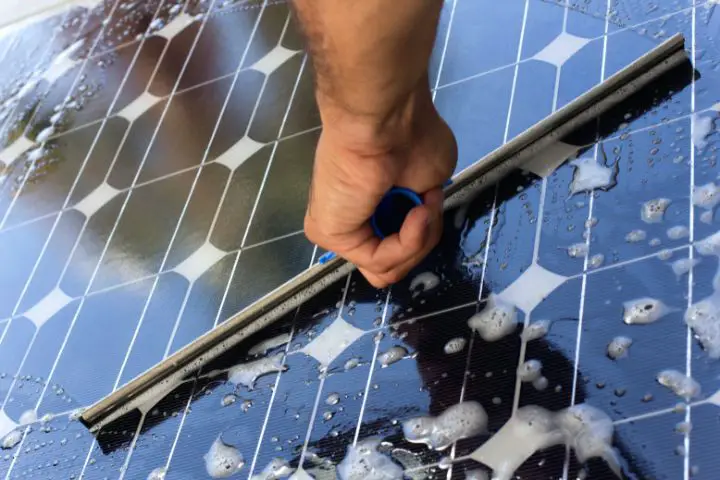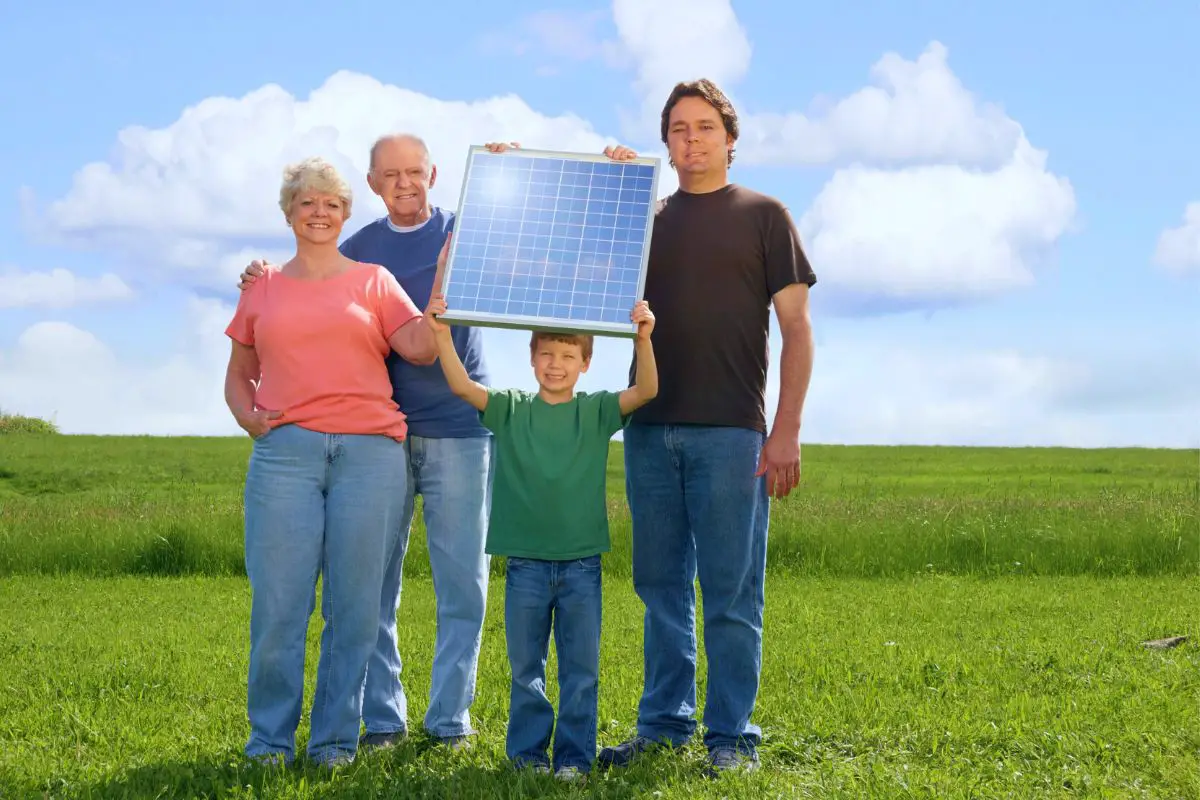Real-Life Solar Panel Experiences & Regrets [+ 11 Dos & Don’ts]
20 thousand dollars.
That’s the average price of a US household going solar, and that’s after you manage to wring out all of the available tax credits or rebates, local and federal.
It’s the equivalent of 150-180 average monthly electricity bills. Small wonder you’re having second thoughts about turning your home into a solar powerhouse!
But before you do anything, there’s some due diligence to be exercised.
To make it easier for you, we talked with experts and owners and asked them about their (or their clients’) real-life experiences and regrets. For your convenience, we organized their tips and accounts into two groups: what you should and shouldn’t do before, during or after installing your solar array.
Dos of Installing Solar Panels
1. DIY can cut your costs in half
“If you are modestly handy, you can do the grunt work and then only call the electrician to finish the system,” tells us Dr. Joshua M. Pearce, professor at Western University, solar expert and director of FAST Research Group.
Of course, “modestly” handy doesn’t mean the same if you’re an engineer versus someone who has never held a hammer in their life. Still, it is possible, especially if you don’t aim for a big array that will produce all the energy you need. For most people, DIY-ing things will be doable for smaller, supplementary rigs.
Whichever scale you choose, there’s a good amount of homework to do. From researching and figuring out all the required permits to assessing your needs, sizing the rig and learning a bit about electricity and different types of wiring, you shouldn’t think of it as a piece of pie. Still, there are online sources, some of which are free like Pierce’s “To Catch the Sun,” an ebook that can teach anyone to build a set of panels.
This source also offers first-hand accounts and case studies of solar panel DIY in a number of cash-strapped local communities in the US, Dominican Republic, India, Mexico.

2. Face it: Everything will take longer than you’d think
It might not be rocket science, but most people won’t dare to DIY their solar, and that’s a fact.
Still, you should be wise to take the initial timeframe your installer gives you with a grain of salt. Not that they would be lying to you on purpose – it’s just that there will be quite a few bureaucratic hurdles to deal with while getting your permissions.
“Each city and county seem to run things differently. Permitting times can vary from place to place and it may take several months to start using your system depending on the county,” tells us Neil Gallagher, co-founder of Brighterway Solar from Tampa, Florida.
He further recommends doing your best to receive an accurate estimate of this time when making your decision.
Not to mention Murphy’s law that’s especially eager to slow down any house upgrades! As soon as you break out the scaffolding, anything that can go wrong will go wrong.
Take it from Athira Hatish from Warma Solar. “It can be more cumbersome than expected and take several weeks or even months to complete. During the installation, your home will be turned upside down, with scaffolding near windows, wires scattered around the house,” she says. “It’s a mess that I personally was not prepared for. Also, be ready to stay on top of contractors who may not always keep to their schedule.”
And the schedule can stretch out anyway. If it turns out, say, that a tree needs to get trimmed or even cut down, that’s at least another day on top of what you’d agreed on initially.
3. You can DIY not just installation but most of the maintenance too

Professional cleaning service will set you back some $8-$25 per panel, and that’s only if nothing is broken or malfunctioning.
However, unless you live in a desert, you won’t need to give your panels a decent scrub more often than once a year. So if you have 20 full-sized panels, professional cleaning would knock out some $500 out of your pocket.
Experts and homeowners agree around one thing: in most cases, maintenance is minimal.
According to certified master inspector Hubert Miles from HomeInspectionInsider, the only substantial cost can be incurred due to weather accidents.
“While routine cleaning is not typically complicated, homeowners should be aware of potential unexpected maintenance costs, such as repairing damaged panels due to severe weather events. Regular inspections by a professional can help identify any issues before they escalate,” Miles points out.
Pierce’s experience isn’t much different. Even in Canada where he lives, there’s not much he needs to do in terms of maintenance. “In the beginning, I would rake the snow off in the winter – but it snows a lot – and when I ran the numbers it was not worth the effort. Solar produces so much more in the summer. Generally, the rain cleaned them off with zero effort from me.”
4. Shop around – and ask around
Shopping around when it comes to solar isn’t just about getting the deal that looks best at first glance. Things are way more complicated than that.
“It’s important to ask if a company is a sales organization or an installer. Sales organizations comprise of sales teams that partner with an installer to do their work. Installers are normally general contractors and will service the system and solar loan. While you can get a good deal with either, it’s important to understand how the process works,” explains Gallagher.
In other words, you should get multiple estimates and make sure it’s always clear who does what.

5. Talk it through with your insurance company beforehand
Are solar panels a permanent fixture and therefore part of your real estate, or are they merely a tool to produce energy?
This isn’t just a philosophical question. It’s a practical concern that can make an insurance deal – or break the existing one.
But that’s not where the problem ends. Your insurer may decide to cover your array with the existing homeowner insurance policy, or they may ask you to get separate coverage. This new policy may or may not include protection from the weather. “It’s not all the time, but it does happen. Some require a small addition while others will not offer coverage to homes with solar. It’s important to do this research beforehand,” Gallagher points out.
6. Read the fine print on your net metering deal
Let’s be honest: not many (if any) homeowners can become totally independent so as to just plug themselves off the grid. In most cases, you’ll be a prosumer: both a producer and a consumer of solar power.
What it means is you’ll have good months when you produce more than you need, and bad months when you’re short on juice and have to buy some. For better or worse, there’s a solution that addresses both sides of the coin, and it’s called a net metering arrangement. What it does is allow you to store up credits in summer to pay for electricity in winter.
But if you still end up needing more than you produce, there’s a caveat.
In many cases, the utility company will charge you more in your dry months than it will pay you when you have some extra power to sell. This will depend on many factors: your region, local regulations and the company itself. If you don’t have much choice, a solution could be to install a battery storage, which is costly but can be profitable in the long run.
“With my system, I am grandfathered into a net metering arrangement. If this changes, I will immediately install a battery system to avoid being ripped off by paying more per kWh than I am paid,” Pierce explains. “If you only get the full value of your solar electricity if you use it then – then you need to get a battery subsystem to get the highest returns.”
Things you should pay attention to while reading the fine print are whether you’ll get charged at retail or wholesale rate and what the fixed charges and fees are. Be sure to also check whether the company has a cap on net metering, after which you’d be stepping into the rip-off area.

7. Living in an HOA? You’ve got some homework to do
Where they exist, HOAs (Homeowners’ Associations) do have a say in almost every and any public or publicly visible aspect of your life. That means they can veto your solar plans as well.
However, that’s about to change where it hasn’t already. And in most states, it’s already changed with the introduction of the so-called “Solar Rights Laws.” In fact, as of this writing, there’s only a handful of states that don’t have solar access laws in place: Alabama, Arkansas, Connecticut, Michigan, Mississippi, Oklahoma, Pennsylvania, South Carolina, South Dakota, and Wyoming.
Long story short, the banners (as in those who ban) are now getting banned from banning solar for homeowners.
So even if you live in a state where solar isn’t fully liberalized, worry not. Before long, your right to go solar will probably get guaranteed on the federal level. The regulators seem to agree that being able to make your home sustainable carries a bit more importance for you and the planet than having to pick up after your dog.
Still, until it goes through everywhere, you need to ask before sticking anything onto your roof or, god forbit, mounting an array on the ground.
Don’ts of Installing Solar Panels
1. Your roof is old? Don’t ignore it
If you choose to DIY your solar panel installation, the least you should do is have a technician inspect the roof and assess how many more years there are in it. As a rule of thumb, if your roof is in decent shape and is likely to keep your head dry for another 15-20 years, go ahead and panel it up.

But if its projected lifespan is anywhere below that, there are two options:
- You’ll either have to replace your roof right away, which will bump up the initial investment,
- Or you’ll have to bleed more (possibly much more) cash down the line for maintenance. Worst case scenario, in several years you’ll have to entirely remove your array to fix the roof and then mount it back again.
Experts confirm this too. “Homeowners usually don’t realize they must remove solar panels for roof replacement, which can add $10,000 or more to roof replacement costs,” Miles tells us via email.
On the other hand, he adds, replacing a roof before solar installation can add to the upfront installation costs but can reduce maintenance long-term.
It’s not just about the roof either. A 50-year-old house will often have electrical components that are a hazard waiting to happen. “Electrical service upgrades in older homes can often cost an additional $2,500 to $10,000 or more, with no tax benefits to offset these costs,” Miles explains.
And what if your roof is ancient but you just can’t afford the extra dent in your wallet? In that case, you might have to give up and wait for better times as old roofs do have the power to break your deal. “Not everyone is even eligible for solar panels. Some people have roofs that are too old or too damaged to sustain them,” says Andrew Meyer, serial climate tech entrepreneur from Arbor, a smart energy platform.
2. Own, don’t lease

It’s a small wonder that many homeowners turn to leasing rather than owning solar panels. There’s little to no upfront payment, and you’ll get your solar kilowatt-hours in a hands-off manner, where someone else is expected to look after maintenance and other factors. Even better, your monthly power supply is guaranteed. And if the company doesn’t deliver after all, they’ll have to compensate you.
Still, when you look at it in the longer run, math says that leasing can never beat owning.
And we’re not just saying that because the provider is going to skim off all the incentives you’d get otherwise, plus your monthly fee.
You should also own your solar power system because owning is the only way for it to increase the resale value of your home.
“Some homeowners had a hard time selling their home after installing solar panels because they didn’t own the panels outright or because their solar panel system was outdated and incompatible with new technologies. Also, you should research the latest solar panel technologies and choose a solar panel system that is compatible with future upgrades,” Hatish recommends.
3. Don’t expect miracles
Solar panels are no doubt amazing, but they are not omnipotent as some companies would have you believe.
Neither are the savings likely to be as high as you hope for. While it is possible to cut down your bills by 60% to 80%, you can’t just take this number and write it in stone. The reason is simple: the promised efficiency is only reachable in ideal conditions, and that happens rarely if ever.
Plus, there’s the fact that efficiency will naturally decay over time. There appears to be no consensus on exactly how much they degrade, but estimates range from 0.5% to 1% per year or even more.
But before all that, there’s also your purchasing power, which will directly affect the quality of your setup. “Some people went for cheap solar panels that didn’t produce enough energy to power their home, while others invested in high-efficiency panels but overestimated their energy needs,” says Harish.
And that’s not the whole problem: cheaper solar panels still cost a lot of money. And if they bring you only half or even less the efficiency of their costlier counterparts, your cost-benefit may sting.

When thinking about your returns from solar, it’s always better to take it as a long-term game. Which brings us to our next and final point!
4. Don’t let the payback time discourage you
Exact payback times will vary, but homeowners will typically break even in 7-8 years. “If you have an average annual electric bill of $3000, it will take over eight years to recoup a $25,000 investment,” says Miles.
Yes, that may be a pretty long time, but it’s just one part of the equation. Payback time only accounts for the savings, not the earnings your system will generate. Instead, Pearce suggests comparing your after-tax return on investment to other investments, such as the stock market.
And his is a case in point. He paid $3/W for a 10kW system, which amounted to a total of $30,000. After factoring in the tax credit and the shoot-up of electricity price, he recouped in less than 10 years.
But according to him, just thinking about payback times is poor economics. “I was earning double digits ROI on the solar on my garage roof – after taxes. Even if you earn, say, 7% on your stock portfolio, after taxes it is more like 4%. In general, solar in the US will save you money and earn you a better ROI on stable investments (like a CD or savings account, which is only a few percent). For example, I did a study in cold and cloudy Michigan and found that EVERYONE would save money with solar,” he explains.






